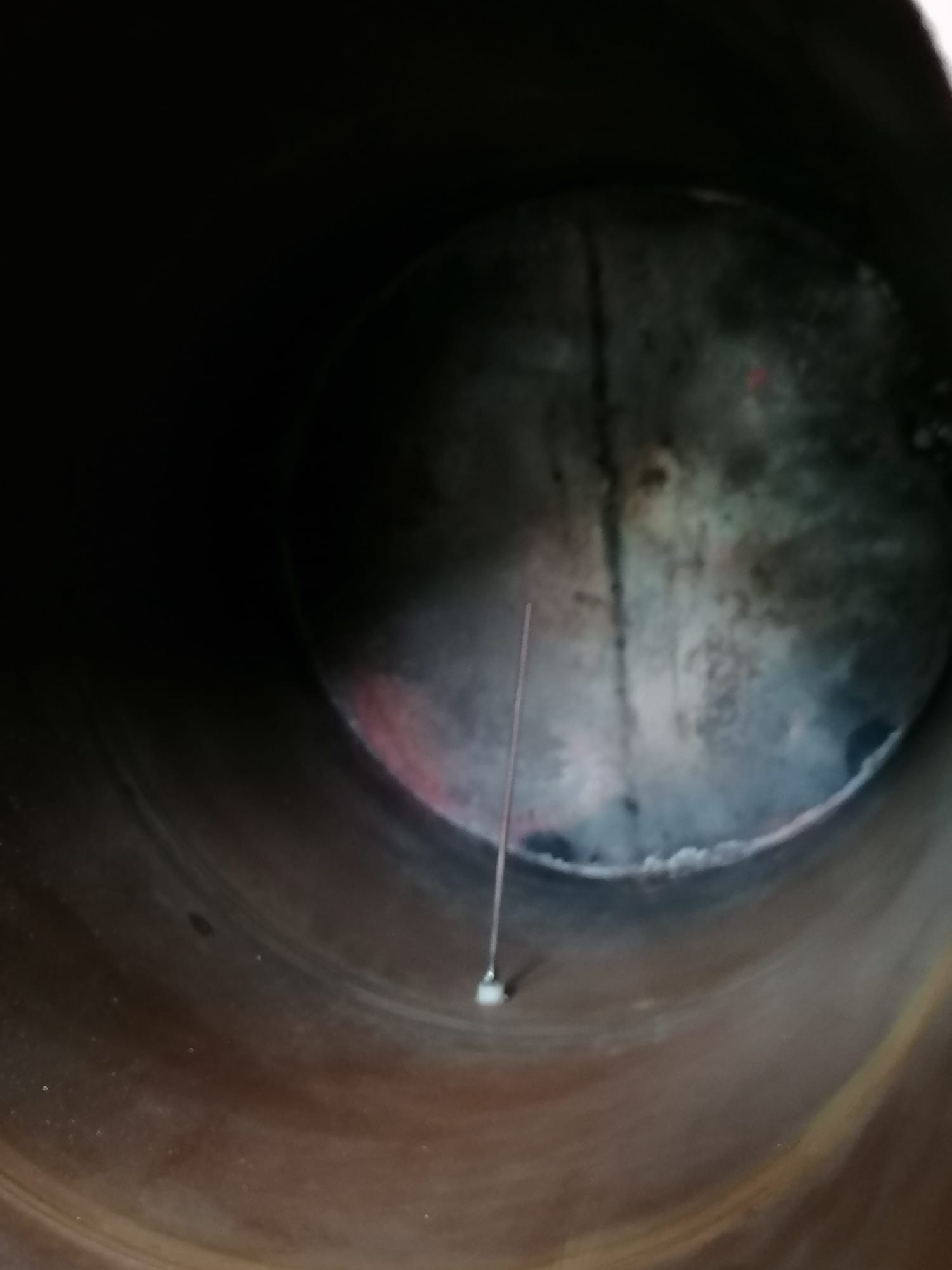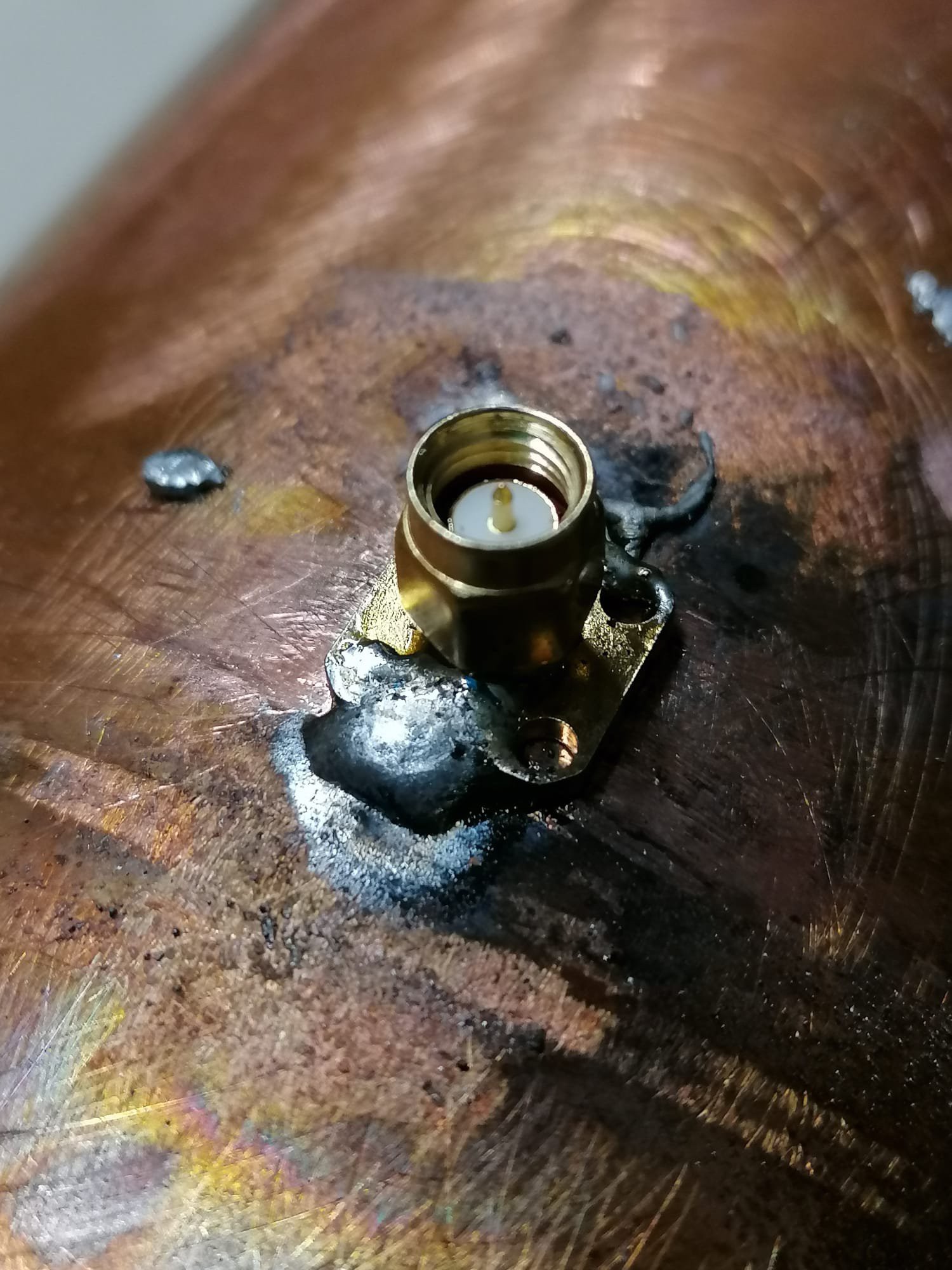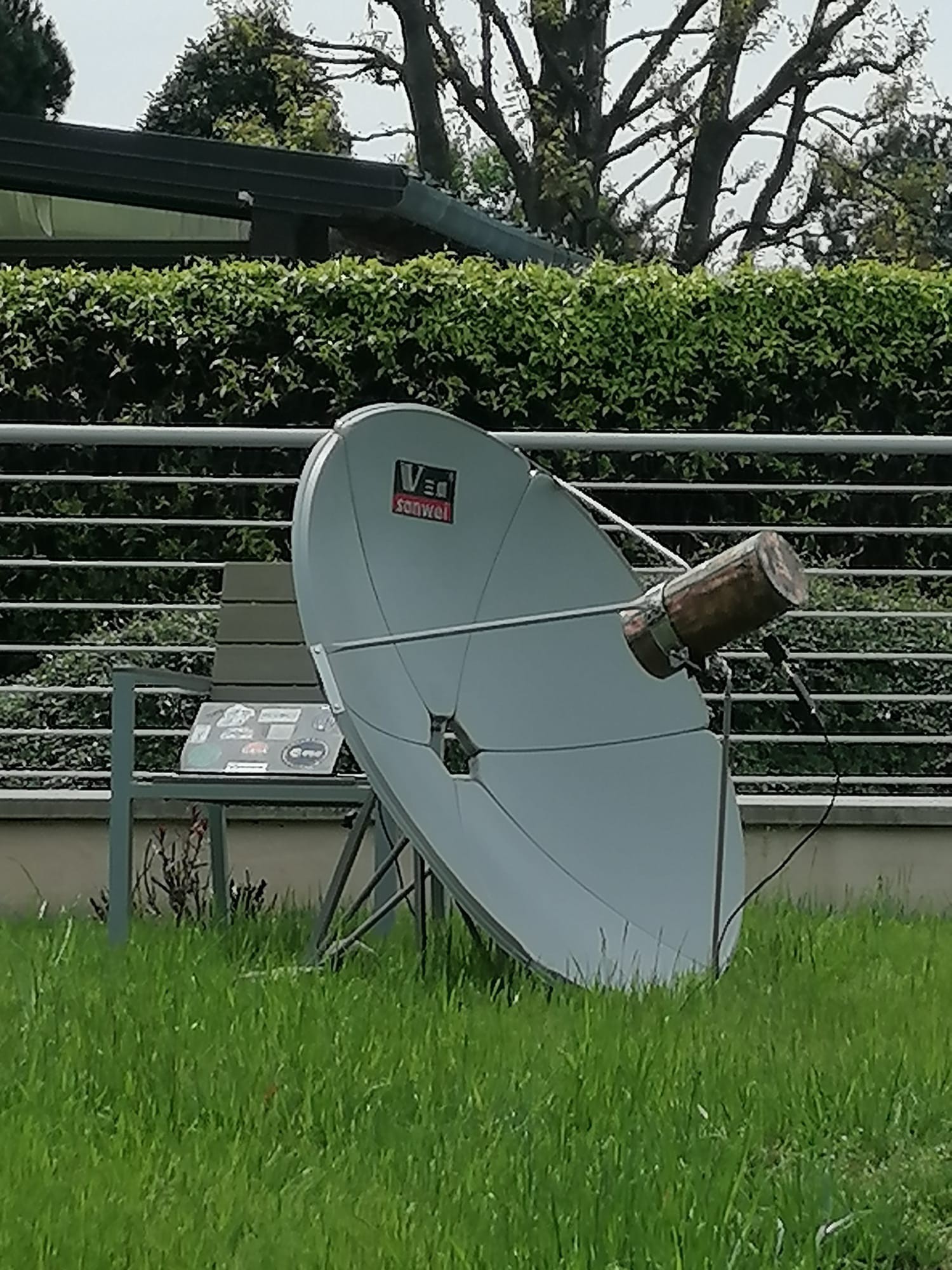News
In the last few days, thanks to my father's help in soldering and assembling the device, the feed antenna for the parabolic dish is ready.
Design
The feed antenna consists of a can-antenna made of a copper cylinder with a depth of 304mm and a diameter of 145mm. Additionally, at 101mm from the bottom of the cylinder, there is a straight copper wire with a length of 52.8mm (the actual antenna wire).
This design was created using this online tool (link here), in order to have a central frequency of 1420MHz, a lower cut-off frequency of 1212MHz, and an upper cut-off frequency of 1582MHz.
So, besides being centred on the frequency of the Hydrogen Line, it should also serve as an initial filter for the radiations we don't want to analyze.
Finally, an SMA connector was soldered to enable connection with a 50ohm coaxial cable to carry the signal from the feed antenna to the LNA and RTL-SDR.
Finally, in order to position this feed antenna above the parabola in the focal point area, an aluminium disk was fabricated to support the copper cylinder and to be connected to the 3 arms of the parabola typically used for satellite LNB connection (approximately 45cm above the bottom of the dish).
The aluminium ring allows adjusting the height at which the cylinder is suspended. My idea (to be verified) is that by lowering the feed antenna slightly below the focal point level, thus sacrificing some gain, the beam-width of the antenna becomes narrower, allowing me to aim more precisely at small astronomical objects.
Difficulties
- Soldering the copper cylinder.
- Soldering the SMA connector to the copper cylinder without damaging the connector.
Why a can-antenna?
This is a question I began asking myself right from the start and delved into further during the design of this feed antenna.
Firstly, the design solutions for a feed antenna typically involve horn antennas and patch antennas. Patch antennas are generally more challenging to fabricate at home without manufacturing errors significantly compromising performance. Horn antennas are also the most common type for these applications (just look at satellite LNB images), so my design would have followed that path.
Some online resources, particularly an intriguing video by Neptunium, showed how it was possible to use a cylinder instead of a horn for the feed of a parabolic antenna, possibly sacrificing some performance, but the compromise was entirely acceptable.
Gallery






( ! ) This setup is temporary, not the final design of the whole system.
 Leonardo
Leonardo
Discussions
Become a Hackaday.io Member
Create an account to leave a comment. Already have an account? Log In.